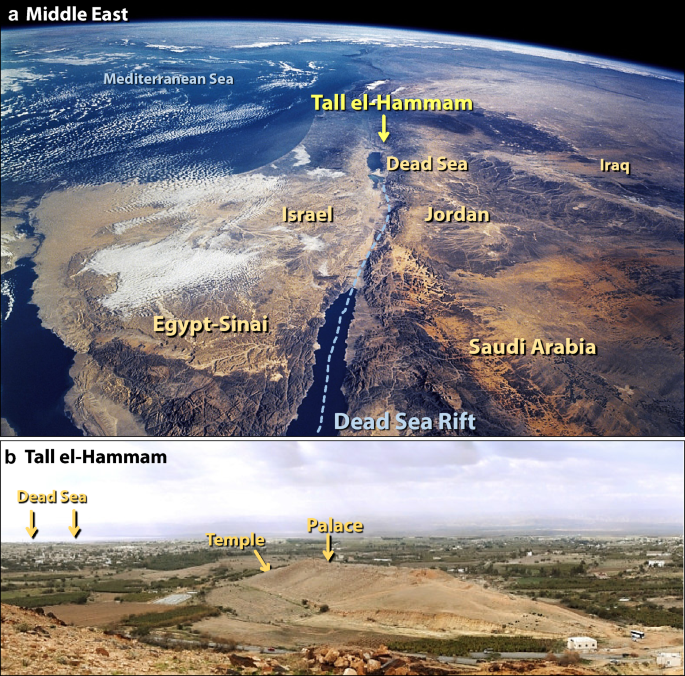Airbus Jr
Banned
Is The Biblical Destruction Of Sodom And Gomorrah Based On A Real-Life Impact Event?
David BressanContributor
I deal with the rocky road to our modern understanding of earth
Tall el-Hammam is the largest archaeological site in the Jordan valley. Discovered during quarrying operations for gravel, the site has been excavated as a joint project of the Trinity Southwest University and the Department of Antiquities of the Hashemite Kingdom of Jordan since 2005.
The region was occupied by humans for at least 2,500 years until around 1,700 BCE, when its farming settlements and cities were suddenly abandoned and people did not return to the region for 600 to 700 years. Tall el-Hammam was apparently destroyed, as the remains of mud-brick walls suggest. Pieces of pottery recovered and dated to the same time of the destruction of the city show evidence of intense heat. The outer layers of the vessels and other objects made from clay partially melted, forming a glassy coat.
At the annual meeting of the American Schools of Oriental Research, the researchers from Trinity Southwest University presented these findings, including a possible explanation. The researchers found zircon crystals in the glassy layer. Zircon is a mineral that can form under extremely high temperatures and pressure, as experienced during the impact of a celestial body on Earth. The researchers found also tiny glass beads on the site. Such spherules are known from other impact sites both on Earth and the Moon.
The spherules, they suggest, were created when an asteroid impact vaporized the ground and small droplets of molten rock fall back to Earth. This explanation of the destruction of Tall el-Hammam by an impact poses an intriguing question, was the destruction of the mythological cities Sodom and Gomorrah, as described in the Bible by fire and brimstone, based on a real-life event? The identification of Tall el-Hammam as the mythological sites of Sodom and Gomorrah is based on the interpretation of some passages in the Bible, describing the land of Sodom as located in the fertile Jordan River plain in the southern region of the land of Canaan.
However, this identification is disputed, as many alternative sites have been proposed over time. The presumed destruction around 1,700 BCE also doesn't seem to fit the biblical chronology. Additionally, the geological evidence suggesting a catastrophic end of Tall el-Hammam remains controversial, particularly because there is no impact crater to be found.
In an alternative scenario, the researchers propose that a comet, composed mostly of ice, may have exploded above the desert. The generated heat burst, an estimated 3,600°F, would be sufficient to destroy the city, melt the artifacts and rocks, but leave no crater behind. Layers of spherules, used in the study to argue for a large explosion, can also form slowly over time. As shooting stars disintegrate in Earth's atmosphere, the spherules fall from the sky and can become concentrated in layers by geological processes, like erosion and deposition.
The destruction of the city may have also been caused by an invasion and a large fire, explaining the partially melted artifacts and why the site was abandoned. Zircon is a common mineral, and not strictly associated with impact events. As intriguing as the preliminary results are, further research is necessary.
David Bressan
I'm a freelance geologist working mostly in the Eastern Alps. I graduated in 2007 with a project studying how permafrost, that´s frozen soil, is reacting to the more visible recent changes of the alpine environment. Studying therefore old maps, photographs and reports, I became interested in the history of geology and how early geologists figured out how earth works, blogging about it in my spare time. Living in one of the classic areas of early geological research, I combine field trips with the historic maps, figures and research done there. But geology is more than a historic or local science, as geological forces shaped and still influence history worldwide
Last edited:

